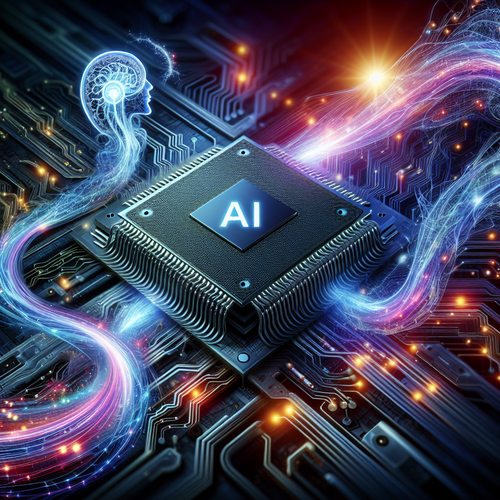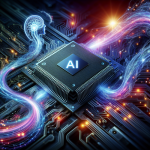
Launch of Ultra-Efficient AI Accelerator Chip
Launch of Ultra-Efficient AI Accelerator Chip
In the fast-evolving landscape of artificial intelligence, the need for efficient processing power has never been greater. Recently, a revolutionary ultra-efficient AI accelerator chip was launched, aiming to set a new standard in the AI hardware domain. This tutorial will explore the key features, benefits, and potential applications of this innovative chip.
Prerequisites
This tutorial is designed for technology enthusiasts, developers, and researchers interested in understanding the aspects of the newly launched AI accelerator chip. Familiarity with general AI concepts and semiconductor technologies is beneficial but not mandatory.
Key Features
- Energy Efficiency: The new chip is designed to deliver exceptional performance while consuming significantly less power compared to its predecessors.
- High Processing Speed: With advanced architecture, it enhances the speed of AI computations, especially in deep learning tasks, allowing for faster model training and inference.
- Scalability: The design allows for easy integration into existing systems, making it suitable for various applications, from mobile devices to data centers.
- Advanced Cooling Technologies: Innovative cooling solutions prevent thermal throttling, ensuring sustained performance under heavy loads.
Benefits of the Ultra-Efficient AI Accelerator Chip
The launch of this chip brings several advantages:
- Cost Savings: By using less energy, organizations can reduce their operational costs related to power consumption.
- Environmental Impact: Lower energy requirements mean a reduced carbon footprint, contributing positively to sustainable technology initiatives.
- Enhanced Performance: Its high processing speed allows for real-time analytics and improved responsiveness in AI applications.
Applications of the AI Accelerator Chip
This chip has potential applications across various sectors, including:
- Healthcare: Faster diagnostics and real-time data analysis for better patient outcomes.
- Automotive: Improved machine learning capabilities in autonomous vehicles for enhanced safety and efficiency.
- Smart Cities: Powering AI applications in traffic management, surveillance, and energy optimization.
Step-by-Step Guide to Integrating the Chip
Here is a concise step-by-step guide to help you get started with this ultra-efficient AI accelerator chip:
- Research the Specifications: Understand the technical specifications and determine the compatibility with your existing systems.
- Acquire the Chip: Purchase from authorized distributors to ensure authenticity.
- Install the Chip: Follow the manufacturer’s guidelines for installation. Typically, this involves placing the chip into the appropriate socket on your motherboard.
- Install Required Drivers: Ensure that you have the latest drivers installed for optimal performance.
- Begin Development: Start developing AI models using popular frameworks compatible with the new architecture, such as TensorFlow or PyTorch.
Troubleshooting Common Issues
While integrating new hardware can be exciting, you may encounter some challenges. Here are common issues and their solutions:
- Overheating: Ensure proper cooling is in place; increase airflow or change thermal paste if necessary.
- Incompatibility Issues: Check for chipset compatibility and ensure all drivers are up-to-date.
- Performance Bottlenecks: Assess the entire system; ensure the CPU, RAM, and storage capabilities align with the performance needs of the new chip.
Summary Checklist
To summarize, here’s a checklist to keep in mind when working with the ultra-efficient AI accelerator chip:
- Understand technical specifications and compatibility.
- Follow installation guidelines carefully.
- Keep software updated for best performance.
- Troubleshoot common issues proactively.
Conclusion
The launch of the ultra-efficient AI accelerator chip marks a significant step forward in AI hardware technology. Its impressive combination of performance and efficiency not only enhances computation capabilities but also supports sustainable practices in technology development. For more information on AI and technology, check out our post on Blockchain-Backed AI Marketplace.















